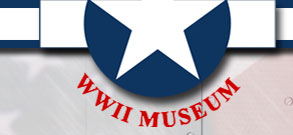In 1914 Glenn Curtiss traveled to England, knowing the Europeans were preeminent in tractor designs, and met with a young engineer named Benjamin Thomas at the Sopwith Aviation Company. Curtiss requested Thomas design a tractor airplane and the result was the Model J. The Model J’s first flight was on May 10, 1914, achieving a speed of 75 mph, thus making it the fastest plane in the US. During this time Curtiss was also working on his own tractor design, the Model N. Both models were then combined, instilling the best characteristics of both. The result was the Model JN – or Jenny. Two noteworthy characteristics of the Jenny is that it has no tail wheel and no brakes – making landing difficult without well developed skills.
The Jenny was first used in war time in 1916 when President Wilson sent troops to New Mexico to capture Pancho Villa and his group of bandits after they had attacked the US 13th Calvary Regiment. The Jennys were used for border patrol, supplying air support as observers. Pancho Villa was never captured.
On May 15, 1918 the Jenny became the first American commercial aircraft in the U.S. with the postal department by delivering air mail.
During World War 1 the Jenny’s were used mostly as trainers for the US and Canadian Army. About 95% of these pilots completed part of their training in a Jenny. By the end of the war more than 10,000 Jennys had been produced.
The years after World War 1 are known as the “Jenny Era” – the JN-4 being the most preferred model and these could be purchased for as little as $500. Hundreds of former military pilots started careers with these planes in the “Flying Circus” and as “Barnstormers”.
By 1930 the Jennys, unable to meet new maintenance and pilot licensing requirements, became illegal to operate in most parts of the US. However, in the 1950s the Jennys made a come back with the “Vintage Airplane Movement”. Jennys now operate under an Experimental License status.
Currently, there are only 5 known fly worthy Jennys in the world. The Jenny has flown through nearly all of this countries’ aviation history. It was also the plane Charles Lindbergh fine tuned his flying skills in.






